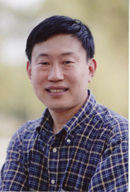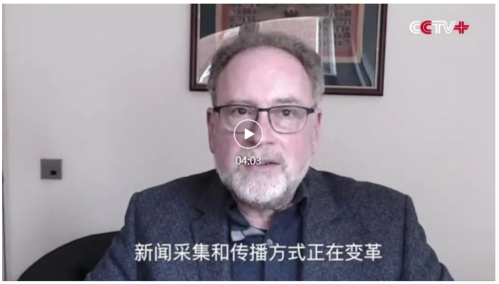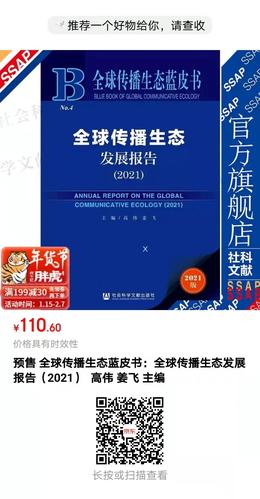专家视点
2月28日,由环球国际视频通讯社有限公司(国际视频通讯社,CCTV+)、北京外国语大学国际新闻与传播学院、社科文献出版社联合举办的《全球传播生态蓝皮书(2021)》发布会暨研讨会在北京举行。国际视频通讯社智库专家、路透社前全球总编辑David Schlesinger发表视频致辞,点击视频观看演讲。
以下为演讲文稿:
It is a great pleasure and honor to once again be associated with the Annual Report on the Global Communicative Ecology, and I present my respects and congratulations to the editors and contributors.
我非常高兴,也很荣幸能够再次参加《全球传播生态蓝皮书》发布会,在此我要向蓝皮书主编和作者表示敬意和祝贺。
When I think about the state of Media Ecology, I concentrate on the technological inequalities in the world that still exist and what this means for media production, distribution, and consumption. Most importantly, I must think about what this means for change and development.
当我思考媒体生态现状时,我关注的是全球技术不平等依然存在以及这对媒体生产、传播和消费意味着什么。最重要的是,我必须思考这对将来的变化和发展意味着什么。
While China is beginning to dream about 6G, and in fact in 2020 already launched an experimental test satellite with candidates for the 6G technology on board, many parts of the world are only now turning off 2G technology – if, in fact, they have mobile access at all.
At the same time as we experiment with the future, much of the world’s population remains in the past, with all that means in terms of communications difficulties, media black spots, and technological handicaps.
当中国开始展望6G技术的时候,事实上,中国在2020年已经发射了首颗6G实验卫星,世界上还有许多地区才刚刚停止使用2G技术。在我们探求未来的时候,世界上大部分人还停留在过去。这意味着通讯困难、媒体报道盲区和技术障碍。
We can celebrate the fact that 94% of the world’s population lies within a mobile broadband coverage area, but despite that fact 43% of that total global populace still doesn’t use the mobile internet at all. Media workers must not forget the unconnected – particularly when they are the ones already suffering from poverty, illness, discrimination, and lack of opportunities.
我们庆幸有94%的世界人口居住在移动宽带覆盖区域内,尽管如此,43%的全球人口仍然无法使用移动互联网。媒体人不应该忘记那些没有连接移动互联网地区的人们,特别是那些同时还遭受贫困、疾病、种族歧视和机遇困乏的人们。
Unfortunately, those who lack media access are also those least likely to be covered by news organizations. Not only do they miss learning from the media, but they miss out participating in the media as well. Their stories aren’t told, their voices aren’t heard.
不幸的是,那些缺乏媒体信息获取渠道的人们也是那些最不可能被新闻机构报道的人群。他们不仅错过了通过媒体了解外界的机会,而且也错过了参与媒体的机会。他们的故事无人讲述,他们的声音无人倾听。
Our plans must not just be for development and progress, but for picking up, helping, and giving voice to those who until now have been left behind. Our plans must not just be for development and progress, but for self-reflection, self-improvement, and reform of our own news gathering and management ethics and practices.
我们不仅要促进发展和进步,而且要帮助那些至今仍被遗忘的人,给他们提供发声的机会。我们不仅需要发展和进步,而且要自我反省,自我完善,改革我们的新闻采编系统,做好道德管理和实践。
Our two-year experience with COVID-19 has pointed out just how vital the media is – but only if that media is understandable, believable, trusted, and available to all. When the Media Ecosystem has worked well, it has delivered life-saving information quickly and efficiently to those who needed it urgently. When the media Ecosystem has worked badly, it has undermined trust, sowed confusion, or even missed whole communities completely.
两年来的新冠肺炎疫情已经表明媒体是多么重要。但前提是媒体是易懂的、可信的、可靠的、对所有人是可获取的。当媒体生态系统运转良好时,它就能迅速而有效地将性命攸关的信息传递给那些迫切需要的人。当媒体生态系统运转不力时,它会破坏信任、制造混乱、甚至完全失去受众。
We know that there are huge currents of change sweeping the global media ecosystem. The definition of news is changing. News gathering is changing. News distribution is changing. The financial underpinnings of the industry are changing too. A news organization that wants to be relevant for the rest of the 21st century must not allow itself merely to be swept along by the change – it must help forge the change. And it also must ensure that it creates an environment of change that is inclusive, diverse, and truly world-encompassing.
变革浪潮正在席卷全球媒体生态系统。新闻的定义发生了变化。新闻采集和分发方式正在变革。媒体产业的资金支撑也正发生变化。新闻机构要想在21世纪有所作为,不能仅在变革中随波逐流,而必须推动变革,且必须能够创造一个包容、多元、全球视野的变革环境。
(阅读更多主题相关内容请参见《全球传播生态蓝皮书(2021)》),社会科学文献出版社)图片







 京公网安备 11010202008210号
京公网安备 11010202008210号